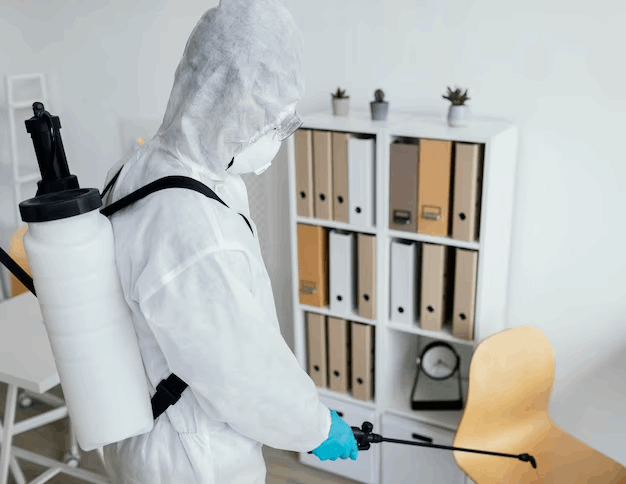Bed bugs are small, parasitic insects that feed on the blood of humans and animals. They are notorious for their ability to hide in cracks and crevices, making them difficult to detect and eradicate.
One effective way to monitor and detect bed bugs in your home is by using indoor bed bug glue traps. These traps are a valuable tool for homeowners and pest control professionals alike, as they can help identify the presence of bed bugs before an infestation becomes severe.
Here, we will discuss tips for effectively using indoor glue traps to monitor and detect bed bugs.
Understanding Bed Bugs
Bed bugs are small, reddish-brown insects that are about the size of an apple seed. They are primarily nocturnal and feed on human blood while their hosts sleep. Bed bugs are excellent at hiding in cracks, crevices, and other small spaces, making them challenging to spot with the naked eye.
The key to effective bed bug detection is vigilance. Early detection of a bed bug infestation can prevent it from spreading and becoming a more significant problem. This is where indoor glue traps come into play.
Choosing the Right Glue Traps
When it comes to using indoor bed bug glue traps, selecting the right traps is crucial. Not all glue traps are created equal, and it’s essential to choose traps specifically designed for bed bug detection. Look for traps that are non-toxic and pesticide-free to ensure they are safe for use in your home.
Glue traps designed for bed bugs typically have a sticky surface that bed bugs cannot escape once they come into contact with it. They may also have a scent or pheromone lure that attracts bed bugs to the trap. These lures mimic the scent of a human and can increase the trap’s effectiveness.
Where to Place Glue Traps
Proper placement of glue traps is essential for successful bed bug monitoring and detection. Here are some key areas where you should consider placing glue traps:
Near the Bed: Since bed bugs are nocturnal and feed on humans while they sleep, it’s crucial to place glue traps near the bed. This can include placing traps under the mattress, along the headboard, and between the mattress and box spring. Bed bugs are more likely to be found in these areas.
Along Baseboards: Bed bugs often travel along baseboards and walls to access different parts of a room. Placing glue traps along the baseboards can help capture bed bugs as they move about.
Near Furniture: If you suspect that bed bugs have infested your furniture, such as couches or chairs, consider placing glue traps nearby. Bed bugs can hide in the seams and folds of furniture, making it essential to monitor these areas.
In Cluttered Areas: Bed bugs thrive in cluttered environments, so it’s a good idea to place glue traps in areas where clutter accumulates. This can include closets, under piles of clothing, and in storage areas.
Near Electrical Outlets: Bed bugs may use electrical outlets as a hiding place. Placing glue traps near outlets can help capture bed bugs that are seeking shelter in these locations.
Regularly Inspect and Replace Traps
Monitoring for bed bugs with glue traps requires regular inspection and maintenance. Check the traps at least once a week to see if any bed bugs have been captured. If you find bed bugs on a trap, it’s essential to take action immediately to prevent the infestation from spreading. You can contact a pest control professional for assistance in eradicating the bed bugs.
If you have not captured any bed bugs on your glue traps for an extended period, do not assume that your home is bed bug-free. Bed bugs are skilled at hiding, and they may not always be attracted to the traps. Continue to monitor with glue traps to ensure that you catch any potential infestations early.
Prevent Bed Bug Infestations
While using indoor glue traps is an effective way to monitor and detect bed bugs, it’s also crucial to take steps to prevent infestations in the first place. Here are some preventive measures you can take:
Regularly inspect your home for signs of bed bugs, such as small reddish-brown bugs, tiny white eggs, or small black fecal spots.
Be cautious when traveling, as bed bugs can hitch a ride on your luggage and clothing. Inspect your luggage and hotel room for signs of bed bugs when staying in hotels or other accommodations.
Wash and dry your bedding, curtains, and clothing on high heat to kill any potential bed bugs.
Use mattress and box spring encasements to prevent bed bugs from infesting your bed.
Declutter your home to eliminate hiding spots for bed bugs.
Seal cracks and crevices in your home to prevent bed bugs from entering.
Conclusion
Indoor glue traps are a valuable tool for monitoring and detecting bed bugs in your home. By choosing the right traps, placing them in key locations, regularly inspecting and replacing them, and seeking professional help when needed, you can effectively detect bed bug infestations early and prevent them from becoming a more significant problem.
Additionally, taking preventive measures to avoid infestations in the first place is essential for maintaining a bed-bug-free home. With vigilance and the use of indoor glue traps, you can keep your home free from these pesky pests.

